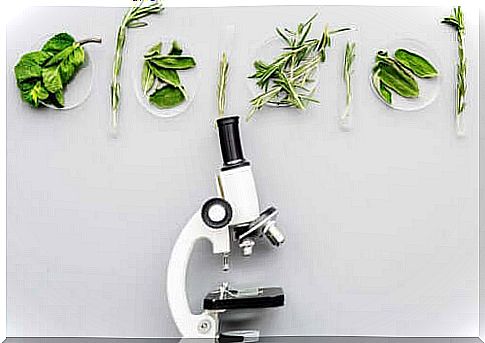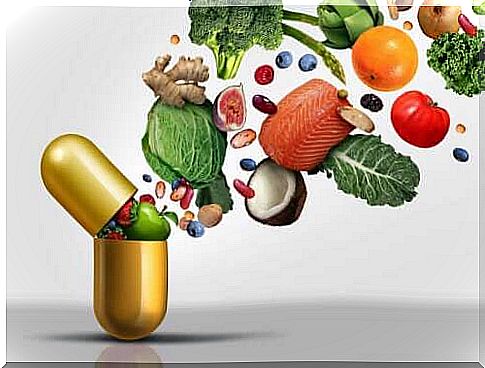Are There Any Benefits To Genetically Modified Foods?

Exactly what are GM foods? How is it made? What impact does it have on people and the environment? There are many questions regarding this topic, so today we will try to answer some of the most common ones.
Genetically modified foods (GMOs) are more prevalent than ever before. But many still consider it a product of a dystopian society. Therefore, there is a tendency to reject it. When you modify something as established as the genetic code of our environment, it can only be bad, can it?
Various interviews have shown that the aversion to these types of foods is quite high among the population. It turned out that 33.4% of the interviewees think they are doing more harm than good, while the acceptance is only 22.8%.
The topic still evokes mixed feelings, but let’s first establish what GMOs actually are.
What are genetically modified foods?
Genetically modified foods are products that are the result of an organism being modified through genetic engineering. In these foods, genes from another living organism have been inserted to create the desired properties. So not all available foods are made that way.
It is also important to distinguish between genetic and transgenic selection. Many types of foods are created through deliberate crossing of plants with the best genes. It can be those with the largest seeds, the most conspicuous fruits, the best colors, etc. However, this is not transgenesis.
To be so, their genome must be artificially modified in some way.
It may sound complicated. In fact, it is! Therefore, we will limit our explanation of how to produce transgenic foods to the most basic:
- First, the bacterium, agrobacterium tumefaciens, has the ability to transmit genetic information to plants. It penetrates into any crack the plant may have. The bacteria enter the intercellular spaces and insert genetic information in the form of a plasmid. This is then taken up in certain areas of the plant’s genome.
- This is how the bacterium acts as a wire for the transfer of DNA. The plasmid it transmits has already been modified by the insertion of genetic information ( other bacteria with the desired properties ).
- In this way, a new, transgenic food is created.
This formula is a simple way to understand one of the most widely used methods of transgenesis.

GMO foods come from genetically engineered organisms.
What are the benefits of GMO foods?
Several studies, such as this one in the Journal of the Royal Society of Medicine , describe the benefits of genetically modified foods.
First of all, keep in mind that there are more than 840 million people on the planet living around the poverty line. And they rarely reach a daily intake of 2000 calories. Therefore , we humans must find new resources.
- GMOs can help us create more nutrition. A clear example of this is golden rice, which geneticists modified to enable the synthesis of vitamin A, especially in developing countries where it is impossible to have a balanced diet. In fact, 72 grams of this type of rice provides 50% of the recommended intake of vitamin A in a three-year-old child.
- Genetic technology makes it easier to produce food. There are plague and disease resistant GMO crops, so fewer plants are wasted. This provides a greater financial gain for the farmers as well as access to more food.
- It helps to create crops that are more resistant to climate change. Admittedly, it is still in the development phase, but it is necessary to genetically process crops to counteract the effects that will arise as a result of climate change in the coming years.

Certain GMO foods provide more nutritious crops. Therefore, they are an option for developing countries where there is no access to a well-balanced diet.
Are genetically modified foods dangerous?
As far as the health of the general population is concerned, there is no scientific evidence of a real danger of transgenesis, according to the World Health Organization (WHO).
There is also no evidence that GMOs cause cancer. In addition, these types of foods are subjected to far-reaching tests, especially to prevent toxicity and allergic reactions in the population. So far, no officially approved genetically modified food has caused any side effects.
But, of course, the whole thing is not just good news. There is always a risk that modified crops will be cross-pollinated with other, less desirable vegetables. This could create imbalance in the natural ecosystem. Crops that are resistant to disease may also be shown to have a negative effect on other species.
Not everything is good about transgenesis. For it can have a devastating effect on natural ecosystems and the species that live there. In addition, there is a risk that food resources will be monopolized so that only those who have access to genetic technology will be able to survive in the market of the future.
As you have probably discovered in this article, genetically modified foods have a dubious reputation. It gets the ball dug thoroughly. But there are both good and bad sides to it. The question is whether we are able to live without them in the near future on an overpopulated planet that is threatened by climate change.
The discussion is still going on.









